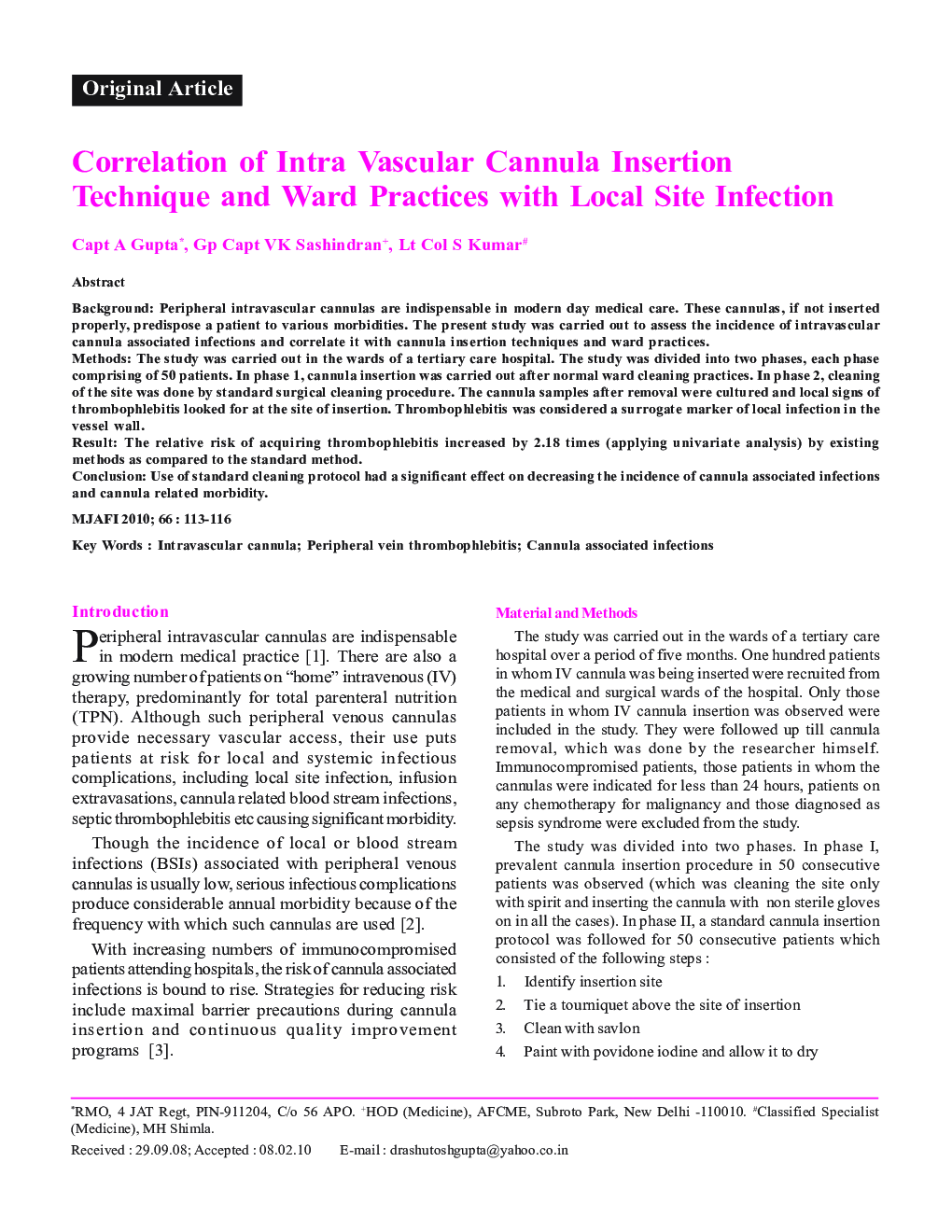| Article ID | Journal | Published Year | Pages | File Type |
|---|---|---|---|---|
| 3162260 | Medical Journal Armed Forces India | 2010 | 4 Pages |
BackgroundPeripheral intravascular cannulas are indispensable in modern day medical care. These cannulas, if not inserted properly, predispose a patient to various morbidities. The present study was carried out to assess the incidence of intravascular cannula associated infections and correlate it with cannula insertion techniques and ward practices.MethodsThe study was carried out in the wards of a tertiary care hospital. The study was divided into two phases, each phase comprising of 50 patients. In phase 1, cannula insertion was carried out after normal ward cleaning practices. In phase 2, cleaning of the site was done by standard surgical cleaning procedure. The cannula samples after removal were cultured and local signs of thrombophlebitis looked for at the site of insertion. Thrombophlebitis was considered a surrogate marker of local infection in the vessel wall.ResultThe relative risk of acquiring thrombophlebitis increased by 2.18 times (applying univariate analysis) by existing methods as compared to the standard method.ConclusionUse of standard cleaning protocol had a significant effect on decreasing the incidence of cannula associated infections and cannula related morbidity.
